

Man Overboard!
Wearing seat belts and installing smoke alarms are among the many things we do to improve safety while hoping we never need to use them in anger. preparing and practising for a ‘man overboard’ is no different, as paul glatzel explains ….
Each year plenty of people fall out of boats. Most of the time recovery of the person in the water is easy – perhaps they swim to the boat, perhaps you throw them a line, perhaps they climb onto a pontoon. Such incidents are looked back on as part of our boating experience that helps us to get better and safer when afloat. But not all man overboard incidents end well – the weather conditions may make returning to the casualty tricky or recovery from the water a challenge. This is why responding and dealing with a man overboard forms such a key part of all RYA powerboat courses at all levels , and why the RYA has developed recommended actions when responding to an incident.
Like anything in life, knowing what to do and being able to do it when trouble strikes are two completely different things. The difference is usually practice, so in this article we’ll look at what to do and how to get better at returning to and recovering a casualty.
RYA powerboat courses teach methods to respond to a man overboard and return to them, but of course it is better not to suffer one in the first place. People get ejected from powerboats for various reasons, but it is safe to say that most of the time it’s the skipper’s fault. Passengers need to be seated with good handholds, driving needs to be adjusted for the conditions and seating arrangements need to be correct. For example, sharp turns with people seated on raised bench seats in RIBs with no sideways restraint risk rapid ejections from the side of the vessel. Overboard situations occur at slow speed too, so crew on deck working lines need good handholds and must keep their centre of gravity low if working forward. Don’t forget communication too – flooring the throttle while no one is holding on will have a pretty predictable outcome.
So what is the process for responding to a ‘man overboard’, or MOB? RYA courses teach a staged process. Assuming that the craft is proceeding ‘on the plane’, immediately an MOB is noticed several things need to happen almost at once. The skipper needs to steadily but positively reduce speed in a straight line. Avoid rapid or high-speed turns back towards the casualty as that risks more people going overboard. At the same time, shout ‘Man overboard!’ and get one person to point at the casualty. They should not stop pointing until the boat is alongside.
The RYA, RNLI and coastguard position is that at this stage it’s recommended to issue a distress call as almost without exception the MOB represents a ‘grave and imminent’ danger to life. It’s easy to think that you’ll sort the MOB with no issues and go straight to the recovery, but in my experience, when under pressure, unless a skipper is well practised and experienced, the adrenalin and worry that an MOB creates give rise to ‘variable’ boat-handling skills. Make the RNLI aware so they are heading to launch and can be stood down – this is much better than wasting 10 minutes failing to recover, then calling. Equally, getting early coastguard input may assist with medical issues such as shock, hypothermia and secondary drowning. Pressing the red DSC distress button then issuing a full Mayday message would be ideal. If not, the DSC button and a brief message – ‘Mayday vessel Tempest, dealing with MOB, stand by’ – will confirm the DSC call and, with the position from the DSC alert, the coastguard will task resources towards you.
Your job at this stage as skipper is to decide what the wind direction is as this is critical for the approach to the person in the water. The RYA teaches two directions of approach to a casualty in the water. Every year I am shown other approaches by skippers that will often work, but by using (and just as importantly, regularly practising) the two recommended methods you are keeping it simple and using methods that have been proven to work over years of practice and testing.
This method of approach suits craft with good access to the bow area. In rougher conditions the rise and fall of the bow can be dangerous and intimidating for the person in the water. A boathook and throw line should be available to increase ‘reach’ from the craft.
This method works for all powered craft and especially suits those where bow access is limited. A common question raised by people is whether it is dangerous to be side on to the wind/waves and whether the craft will be blown over the casualty. It is true that in breaking seas being beam on to the waves is highly dangerous, however in most windy conditions the waves are not actually breaking, so they pass beneath the vessel and are thus not overly dangerous. The method works well and gives a far larger target area, and is less intimidating for the person in the water.
Both methods are taught (or brushed up on) on all of the powerboat courses (Level 2, Intermediate and Advanced), but there is little point in just experiencing them there. The RNLI’s coxswains don’t become highly accomplished at recovering people by just doing a recovery from time to time; they practise repeatedly – and so must you! At the start of each season, spend an hour or two practising with your regular crew. Deploy a weighted fender or a half-full water bottle (never use a real person – it’s not worth the risk) and then practise the two approaches until they become straightforward. When you go out next and it’s a bit windier, try again as it’s important to keep practising in varying conditions to keep your skills up. Make sure too that you get the other members of your crew to practise with you not saying a word and pretending not to be there – after all, it could be you they are coming back for!
Getting the person alongside the craft is only half the battle, though, and you will need to develop a plan for getting an MOB back on board. On RIBs it’s pretty easy (relatively!) as the tubes are usually low and if needed you can deflate them to further reduce the freeboard. A person may be able to use parts of the engine as a step (engine off and kill cord out), and of course there may be a ladder that can be deployed from a swim platform at the stern. Whatever method is chosen, it’s worth being really clear about the plan and ensuring all on board know how it will work.
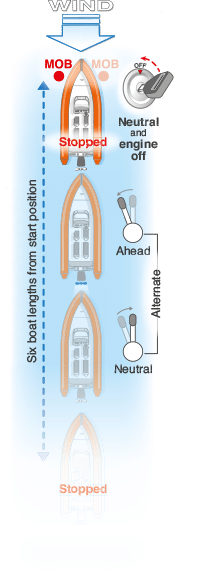
Don’t forget the need for some medical advice for the person that has been in the water. Even if you recover the person immediately, chat things through with the coastguard because if they have ingested water there could be life-threatening consequences over the following few days.
Hopefully you’ll never have to deal with an MOB from your craft or anyone else’s. If you do, though, the practice you put in following this article will certainly stand you in good stead. Have fun afloat!
Method 1 – into the wind
- Position your vessel about six boat lengths downwind and stop. Alternate between forward gear and neutral to progress slowly at minimum speed towards the casualty.
- One side of the boat may be preferable for the approach due to more space or a better view.
- With a slow approach, using reverse to reduce speed should never be necessary.
- At point of contact, neutral and engine off.
Method 2 – side on, drift down
- This method relies on the skipper positioning the craft two boat lengths directly upwind of the casualty and on keeping the craft at right angles to the wind.
- From this position the craft is then blown towards the casualty – forward and reverse may be necessary to ensure that the craft maintains the correct position. Again upon contact, neutral and engine off.
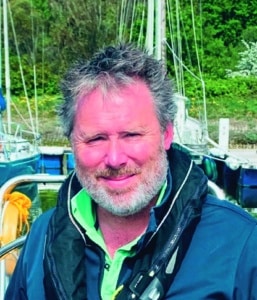
Related Posts

Back to Basics Part 7: Dealing with Emergencies

Top Tips Video Series: ‘For the New Boater’

Top Tips Video Series: ‘Are you overweight?’

Top Tips Video Series: Lets Talk ‘Keeping Dry!’

Top Tips Video Series: Let’s Talk ‘Weather Conditions’

Top Tips Video Series: Let’s Talk ‘Kill Cords!’

Subscribe to the PBR Newsletter
Get all the latest news, reviews and exclusives, direct to your inbox
By clicking subscribe, you agree to receive news, promotions and offers by email from PBR. Your information will be used in accordance with our privacy policy .
Call 9am - 9pm / 7 Days: 0845 834 0335
- Sailing Courses
- PowerBoat Courses
RYA Sailing & Boating Articles - Tips, Tricks & Guides
Handbook at the RYA Shop Logbook at the RYA Shop Man-Over-Board (MOB) RYA Day Skipper , Coastal Skipper & Yachtmaster ™ Man-Over-Board drill for sail cruising.
Articles and content courtesy of the RYA. See the original articles at www.RYA.org.uk Back To Top All Rights Reserved 2013 - 1st ScotSail Training Ltd Trading As 'ScotSail' ® | Largs Yacht Haven, KA30 8EZ | 0845 834 0335 | TemPerfect | Links 
RYA Powerboat Level 2
 The RYA Power Boat Level 2 is the most popular powerboat training course and the two days over which it is run gives plenty of time for both practical instruction and theory. Powerboat level 2 course aim is to teach powerboat handling and seamanship in powerboats. The course costs £90 to MYC members, and upon completion of the course you will be able to use all three club safety boats. There is then a follow on course available to members to give instruction on operating a powerboat, RYA Safety Boat. What Is Covered in the Course?This course teaches you the basics of handling a powerboat including safety and navigation. It essentially provides you with the skills you need to use a Powerboat in coastal waters or charter a boat on your next holiday. When you take the course, qualified RYA instructors will provide training on a modern and fully-equipped powerboat. Your instructor will cover the following topics with you during your 2 days with him or her:
The RYA theory element of the PB Level 2 course will cover the types of craft and their respective advantages and disadvantages, engines and drives, use of power tilt and trim tabs, safety checks, personal buoyancy, awareness of other water users, application of the collision regulations (IRPCS), local bylaws, towing and being towed, communication with other craft, emergency action, distress signals, fire precautions and fire fighting, and rope work. This is a classroom based element. International Certificate of CompetenceICCs are required in many European countries when using or chartering vessels. It shows your competence and is essential to skipper a boat in the Mediterranean or European waters. The Powerboat level 2 course suits those with extensive boat handling experience and those who have never stepped onto a boat before. On completion of the Powerboat Level 2 course you can apply for your ICC. Course RequirementsYou do not need to have attended a Powerboat Level 1 Course in order to do this course. No prior boating experience or powerboat training is necessary or essential if you want to take the course, and it is open to anyone over the age of 12. The RYA Powerboat Level 2 ICC Course suits both those with extensive boat handling experience and those who have never stepped onto a boat before. A further consideration when attending the RYA Powerboat Level 2 ICC Course is where you take it as MYC a coastal based club we are able to award certificates with a coastal endorsement. This means that the student has learnt in conditions where tides and currents must be considered. Attached is the RYA outline of powerboat courses. 
Last updated 13:17 on 10 February 2024

 Training: What you learn on an RYA powerboat Level 2 courseOur News Editor recalls what he learnt on his first weekend of formal training at Mendez Marine on the River Hamble While there’s no replacement for raw boating experience, there’s quite nothing like a weekend of boat training to drive home what you do and don’t know. Having cut my teeth inland on much larger boats, refining the basics aboard a 5.8m RIB on Southampton water to get my RYA Powerboat Level 2 licence was an experience of fine margins and precise handling. My hosts for the weekend were Hamble-based training centre Mendez Marine, which runs a range of courses for boaters of every level. RYA Level 2 Powerboat is where many boaters start their training and while it is suitable for beginners, it’s no walk in the park. In a group of three, alongside a 20-year veteran RYA Yachtmaster, I quickly embraced my role as the dunce of the class, regularly asking the stupid question. Recommended videos for youWe began with the basics of wind and tide, and using these elements as your brakes when performing slow-speed manoeuvres. Next came Met Office forecast terminology and a quick rundown of the local bylaws. Our instructor Kieran belied his years with two pieces of sage advice that I would later wish I had tattooed onto the inside of my eyelids: “Steer before gear, and keep one hand on steer and one hand on gear”. The classroom section was necessary but mercifully short – the July sun was beating down and we’d come here to do some actual boating. Out on the water Kieran introduced us to Kake , our vessel for the day, with the fondness and respect that reflected his years growing up with boats of all sizes. This Ribcraft powerboat was fitted out with GPS, VHF, a 140bhp outboard and a windscreen, which would come in handy during the high-speed thrills of day two. After a quick orientation we cast off into a particularly strong spring tide and set about proving our mettle with some basic manoeuvres. Holding off behind pylons and picking up a mooring buoy proved straightforward enough, but coming alongside was particularly challenging as the tide raced in. The best way I can describe it to a non-boater is: imagine parallel parking a car on a slow-moving treadmill. Kieran’s patient and encouraging attitude ensured we could all tick this off eventually, even if I took a few attempts to perform the manoeuvre without ferry drifting or bashing a sponsom against the pontoon. Stopping for lunch back at base halted our progress up the Hamble, but we were relived to sit on a more comfortable seat. While Kake was fitted out with everything we could need from a technical point of view, she was not built for comfort and the narrow seats meant that we were staggering like John Wayne after a two-hour stint on the river. The afternoon’s activity started with turning in a confined space – a drill that really brought the whole ‘steer before gear’ principle into focus when the penalty for failure was bumping into a £2m superyacht. The blazing sunshine had brought local river users out in their droves, and we were constantly reminded of the rules of the road as we navigated past sailboats, canoes, motorcruisers and paddleboarders. Through it all Kake was highly responsive, much more so than I was expecting: it took a while to realise that small adjustments would be enough to change our course sufficiently. With all our drills complete, we nipped back to our pontoon as low tide approached, thankful for our trim tilt and skeg-adjusted depth sounder as less than 1m of water remained at HQ. We went our separate ways for the night, and while my boating skills had been given a thorough workout, I knew that the real fun had all been saved for day two. Thrills and spills A mercifully overcast second day saw us head out onto Southampton water for some high-speed action, and as Kake hit 4,000rpm and rose up onto the plane, I was reminded why I was doing this in the first place. Nothing quite compares to the raw thrill of piloting a RIB at 25 knots. With the responsiveness of a rollercoaster and excitement to match, it’s easy to see why this is such a popular gateway to motorboating. Kake ‘s unique characteristics came into play, as she smoothly turned to starboard but put up much more of a fight when turning to port. The urge to grab the wheel with both hands was hard to resist, but Kieran’s second mantra ensured that we were never allowed to let go of the throttle for very long. S-turns and powered U-turns were followed by tighter U-turns and P-turns, as we rode the considerable wash thrown up by sportsyachts and catamarans. Once Kieran was satisfied that we knew how to do the fun stuff, we dropped anchor at Hythe for a lunch break and quick buoyage quiz. One of the most useful things you can learn on a training course is what to do in an emergency and the man overboard procedure brought together everything we had learned so far. Using a fender and a bit of clever distraction, Kieran simulated this worst case scenario and we were required to perform a P-turn before approaching upwind with the utmost precision to retrieve our tiny target. The side-on drifting approach was also covered, by which time our sensei was satisfied that we could cope with a real-life MOB. Hatching a plot With chartplotters so commonplace these days it can be easy to neglect more traditional navigation skills, but this course ensured we could cope without such modern fripperies. Classroom theory was put into practice as we took bearings from a compass to determine our exact location on the chart before following bearings that we’d mapped out in the morning to buoy hop our way back to the mouth of the Hamble. Coming off Southampton water and back onto the river with its six-knot speed limit felt like turning off a motorway, and this led some to resort to impatient overtaking as we patiently cruised back to our berth before low tide. I certainly felt a great deal of pride upon being presented with my certificate, and even though it is not a legal requirement unless your boat is more than 24m long, a course like this should be seen as an essential primer for any self-respecting skipper. I’m only ashamed I didn’t do one sooner. Mendez Marine offers boat training ranging from VHF courses through to Yachtmaster exams. For more information, visit mendezmarine.co.uk or call 01489 588977. Absolute Navetta gets a snazzy new makeoverFjord 39 tour: maximised space and amenities, france and greece now easier to enter after non-eu leisure craft rule changes, latest videos, bluegame bgm75 sea trial: the €6.8m powercat that thinks its a monohull, cormate chase 32 tour: fast, stylish and practical weekender, axopar 29 sea trial: sun top vs cross cabin – which is best, sunseeker ocean 182 – see how this compact superyacht copes in a wet and windy sea trial.  RYA Power Boat Level 2This entry-level award provides the skills and background knowledge needed to drive a powerboat. The course focuses on low-speed close quarters handling, man overboard recovery, an introduction to driving at planing speed, and collision regulation. Things to consider:
You cannot amend your booking. We do not offer cash refunds for this event. We do not offer credit for this event. Make an enquiry about this eventYour basket is currently empty. Royal Yachting Association (RYA) Powerboat Handling Level 2Royal Yachting Association Powerboat Handling Level 2). RYA Powerboat Level 2) training takes place at our private country house estate venue in Staffordshire; a two-day course aimed at the commercial / industrial / lowland rescue and fire & rescue sectors; operating in land-locked counties without tidal or coastal considerations. Our instructional team are either currently serving or recently retired from both lowland rescue and fire & rescue backgrounds. Please note that we NO LONGER OFFER ‘ LEISURE ’ TYPE POWERBOAT TRAININING , only commercial courses, booked ‘per vessel’; three candidates to one instructor or multiples thereof. Having moved away from ‘leisure’ oriented boat courses since the spring of 2023, Birmingham & Midland Marine Services Ltd are only running commercially oriented RYA Powerboat Level 2 training: our main client base being the Canal & River Trust, the Environment Agency, their contractors, sub-contractors, and Lowland Rescue / Blue-Light personnel in lesser numbers. Although not undertaken on coastal or tidal waters the theory is still covered in full and the licence issued upon successful completion is valid for inland and coastal environments within RYA guidelines. Training is undertaken on a 3:1 basis as a ‘closed course’. We generally run two vessels simultaneously, as a 6:2 but are limited to three candidates to a vessel. 3 is our minimum number of candidates per invoice. Course charges are based on a full cohort of three candidates to a vessel with one instructor. Two candidates attending would be charged for the full three places. Prices are variable with discounts available for multi-boat bookings and for blue-light organisations; please contact [email protected] for more information. Training takes place at our second training centre at Chillington Hall, based from an 18th Century ‘Grecian Temple’, adjacent to the 60 acre lake in the grounds (designed by the renowned landscape architect, Lancelot ‘Capability’ Brown) of the private, country estate; home of the occupying Family for some 900 years ( www.chillingtonhall.co.uk ). We generally have availability for either three or six candidates on Mondays & Tuesdays, Thursdays & Fridays, if conditions allow (ice, excessive wind). Not having sole-access to the lake we can only advise upon which dates are ‘currently’ available for powerboat training: Other estate activities including ‘live firing’ events are also run in the same location, and shooting in particular doesn’t work too well with boats being on the water at the same time! If the lake or surrounding areas have earmarked for live firing activities out after you have given us your preferred dates, we will liaise with you to try to find an alternative set of consecutive dates that work for both parties. Commercial / Industrial Training Powerboat training for personnel working ‘Tiller-steer’ craft on inland, non-tidal waters such as Environment Agency / Canal & River Trust / Marine Access / Lowland Rescue / Safety staff and contractors, is undertaken on a minimum booking of three candidates , in multiples of three, ‘generally’ aboard our RTK Marine Mk 1) Rigid Raiders; 5m military craft. These craft are former Royal Marines Commandos vessels and with 15hp outboard motors are an ideal training boat for those candidates who are likely to be deployed on Category ‘A’ & ‘B’ or ‘non linked’ waters such as canals, rivers, lakes, and reservoirs. The course also forms on one the prerequisites for both our ‘Inland Waters Rescue Boat Operator’ course and ‘DEFRA Module 4) Water Rescue Boat Operator / Swiftwater & Flood Rescue Boat Operator’ courses. Course content: This course covers the full syllabus of the RYA scheme, plus additional ‘commercial’ and ‘safety / rescue’ content, course content and delivery developed with involvement of both the Environment Agency and the Canal & River Trust. Covering elements such as boat handling, securing to a buoy, anchoring, leaving, and coming alongside, man overboard. operating in weed or shallow water conditions, vessel handling in the shallow-drive position, introduction to casualty positioning and management, search patterns and working in low-light / poor visibility conditions, the course provides a foundation level to both the ‘Inland Waters Rescue Boat Operator’s qualification and the Flood Rescue Concept of Operations DEFRA 4 Rescue boat Operator qualification. For Maritime & Coastguard Agency guidance on training requirements, please follow the link below to view MSN 1853 (M) Amendment 1 M Notice Template – MSF 5011 (publishing.service.gov.uk) This notice describes the application of The Merchant Shipping (BoatMaster’s’ Qualifications, Crew and Hours of Work) Regulations 2015 (“the 2015 Regulations”). The 2015 Regulations re-enact the Merchant Shipping Inland Waterway and Limited Coastal Operations) Ability after the course: Self-sufficient powerboater in the right conditions, aware of own limitations and those of craft. Commercial use in daylight hours on Category ‘A’, ‘B’ and ‘non-linked’ bodies of water such as lakes and reservoirs. Commercial endorsement required for Category ‘C’ and ‘D’ waters and for night operations. Note: This level of training would not prepare the coxswain to undertake Safety or Rescue Boat cover roles as these skills require additional training. Please contact us for details. Included in the course fee:
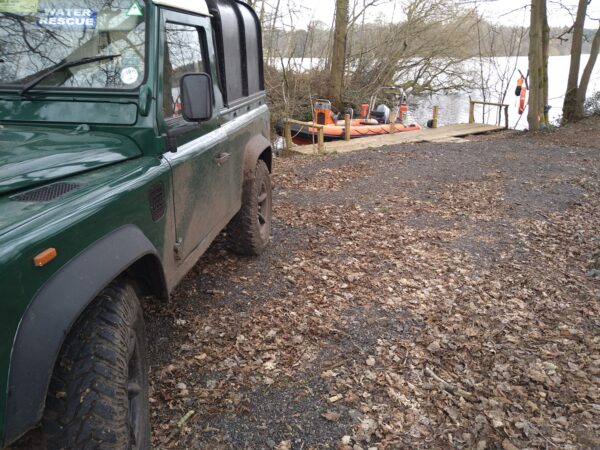  RYA Powerboat Level 2 CourseWhat is rya powerboat level two. The RYA Powerboat level 2 course provides the skills and background knowledge needed to drive a powerboat. It focuses on low-speed close-quarters handling, man overboard recovery, an introduction to driving at planing speed and collision regulations. This RYA Powerboat Level 2 Course can also be converted to an International Certificate of Competence (ICC). This will allow you to hire boats Internationally or for work purposes. Please bring the following:
We will supply the following:
The AHOY Centre Borthwick Street
Subscribe to receive news and updates   Advanced Powerboat SyllabusAim: To teach boat handling, seamanship, pilotage and navigation up to the standards required to drive a planing powerboat safely by day and night in tidal coastal waters with which the candidate may be familiar.
Advanced Powerboat Examination
  zephyr yachtingRya powerboat level 2, course description. This two-day entry level course provides the skills and background knowledge needed to drive a powerboat and is the basis of the International Certificate of Competence. It focuses on low speed close quarters handling, man overboard recovery, an introduction to driving at planing speed, and collision regulations. The course is 85% practical and taught on a 6.5 RIB with 3 persons maximum per course back to all coursesLaunching and recovery, boat handling, securing to a buoy, anchoring, leaving and coming alongside, man overboard Book CourseFind out more. If you have any questions about this course, do not hesitate to contact us. Simply submit the form below.  keep in touchPhone: +33 493 33 34 04, email: [email protected]. website created by the agency 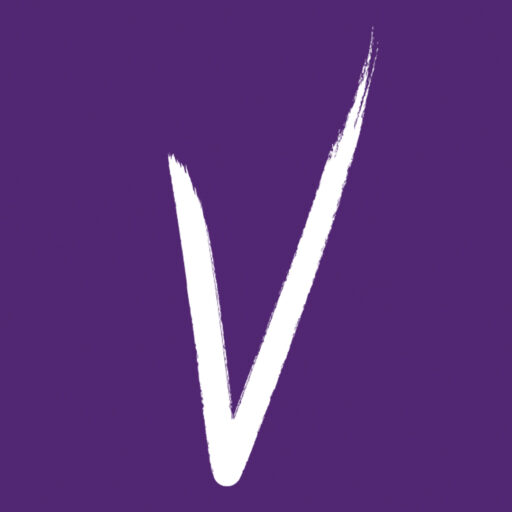
RYA Level 2 – Powerboat Handling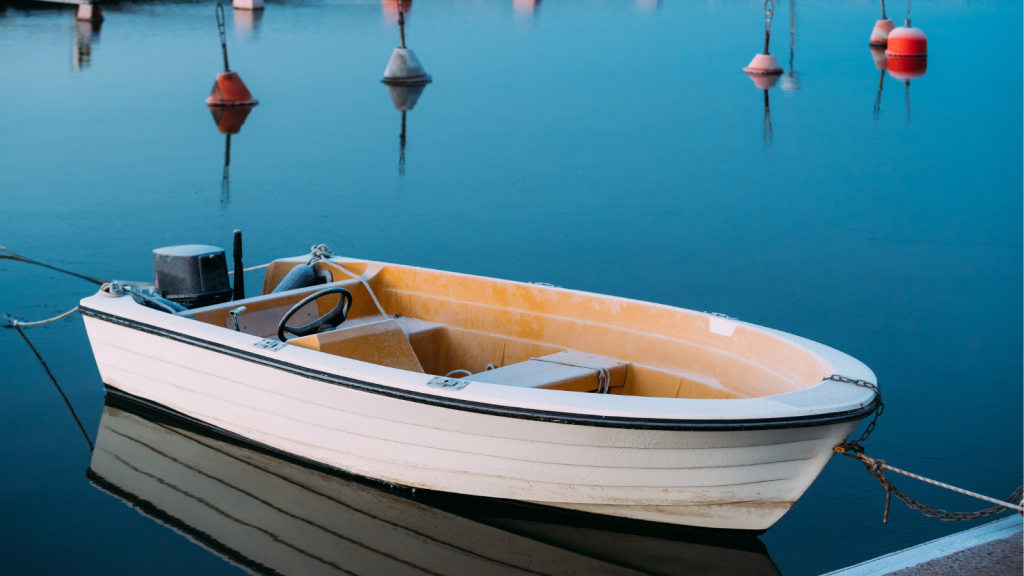 Learn how to drive a powerboat safely. This two-day entry-level course provides the skills and background knowledge needed to drive a powerboat. The course covers launching and recovery, boat handling, securing to a buoy, anchoring, leaving and coming alongside, man overboard recovery, slow speed close-quarters manoeuvring, an introduction to driving at planing speed and collision regulations. You are required to bring along a passport style photo, should you pass the syllabus. The start powerboating handbook is included in the course price as is the certificate however this is not guaranteed unless the course is successfully completed. Equipment hire is also included in the price. Duration: two-day course Time: 09:30 to 16:30 each day with a break for lunch. Pre-course requirements: No prior experience or knowledge is required Minimum age of 16.
 Contact DetailsSearch vision.
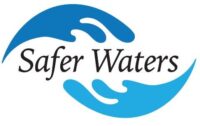 Safer Waters is a Charity offering a unique service in Northern Ireland, established in 2020 to provide a Safety Boat service for water-based community events. We are also an RYA Training center offering Powerboat PB2 courses Cost:- Members £190, Non Members £220 RYA Powerboat Level 2
RYA Powerboat Level 2 Course provides the skills and background knowledge needed by the competent powerboat driver and is the basis of the International Certificate of Competence. It aims to teach boat handling and seamanship in powerboats. It focuses on low-speed close quarters handling, man overboard recovery, an introduction to driving at planing speed, and collision regulations. This course is held over two 8 hour days. Simply click on the Book Now button which will take you to our secure booking system, select your date and complete the payment. Full course joining instructions will be forwarded to you when your booking has been completed. Course Content
If you’d like further info or want to find out more, use this form to get in touch with us. Privacy Overview
RYA Training CentreThe rya powerboat training scheme is for those wanting to drive small open powerboats such as ribs (rigid inflatable boats), sports boats and small launches.. With the RYA Powerboat Level 2 scheme you can gain an International Certificate of Confidence (“ICC”) that means when you go to certain countries, you may need a license to hire a BOAT up to 10m – that’s where we can help you prepare.This two-day entry-level course provides the skills and background knowledge needed to drive a powerboat and is the basis of the International Certificate of Competence (ICC). It focuses on low-speed close-quarters handling, man overboard recovery, an introduction to driving at planing speed and collision regulations. This two days course gives plenty of time for both practical instruction and theory. Whilst at first glance the syllabus appears very similar to the level one course, the extra time available makes a real difference to the depth in which subjects are covered and therefore the amount a student can learn. We are lucky with the beautiful Cyprus weather, so we are making the most of it by teaching a great part of the course on board of the boat.
All our courses are held in Latchi; Theory will be held in our classroom at our office in Latchi, and the practice is held along the coast of Latchi. All Courses are delivered in English Language only. For more info on the courses, please use the “contact us” form or email us at [email protected] with the number of people interested in the course and the dates you wish to do the course. The RYA Level 2 Powerboat course costs €450 and is scheduled over two days – including a theory and practical examination. You will learn and enhance your Powerboat manoeuvring skills on a range of boats available in Latchi Harbour from George’s Watersports. Our RYA Training Courses are conducted throughout the year, and we suggest that you do book well in advance to secure your place. The RYA offer the Powerboat Level 2 course for anyone 12 years and older, however, our centre took the decision to only offer this course to people over 18 years old. Automated page speed optimizations for fast site performance 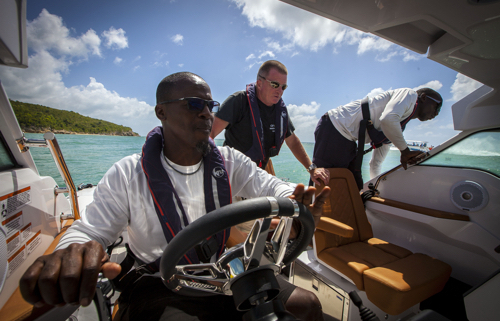 RYA Powerboat Level 2This is a popular course and very suitable for residents and visitors alike and is fully accepted locally and internationally for recreational boat usage as well as a requirement for those driving tenders in the yacht industry. It will provide you with the skills and background knowledge needed by the competent powerboat driver and is the basis of the International Certificate of Competence . It aims to teach boat handling and seamanship in powerboats. It focuses on low speed close quarters handling, man overboard recovery, an introduction to driving at planing speed, and collision regulations. Please click here to see the progression of RYA Powerboat Courses and the recommended path for both theory and practical courses. Other courses to consider alongside this course: RYA Short Ranger Certificate - A license to operate VHF Marine Radio Worldwide. RYA Dayskipper (Shorebased) or RYA Dayskipper (Online) - Developing on your Navigation Skills, Safety Awareness and Metrology Skills. Outboard Engine Maintenance Course - Learn to diagnose problems and service your outboard engine RYA Diesel Engine Course - Useful for those working on inboard engine vessels. Develop on your diesel engine skills, covering troubleshooting, servicing, winterisation and more! The RYA Powerboat Level 2 course is one of the most useful and versatile of our courses for the following reasons: 1. It will help you, passengers and other users to become safer on the water. 2. Teaches you practical skills plus the basics of navigation, safety, rules of the road and much more. 3. It is accepted by ADOMS in Antigua & Barbuda as meeting the requirements of the Small Craft [Control] Regulations 2017. In short you now need a license to drive a pleasure craft by law in Antigua & Barbuda. 4. It is accepted internationally and for a small fee you can apply to the RYA for the ICC, International Certificate of Competence which is also a very useful international leisure license. 5. It is also accepted as a professional qualification and is sought by many people working on super yachts in order to be able to drive the tenders and support vessels. Not only that, it forms the basis for the Boatmaster 3 course for inshore small boat professionals here in the Caribbean. 6. You can arrange for the course on your own or Ondeck’s vessel. 7. It is 2 days and we can offer flexibility on dates during the week or weekends. 8. Excellent instructors who are informative and patient. 9. A good base course that can be followed up with more in depth driving, maintenance or navigation skills courses. Please click on the ' Training Dates & Booking ' button on the right to check available dates, however, we also run the course in Antigua On Demand - Individual places available upon request at $550 per person.  This site uses cookies. By continuing to browse the site, you are agreeing to our use of cookies. Cookie and Privacy SettingsWe may request cookies to be set on your device. We use cookies to let us know when you visit our websites, how you interact with us, to enrich your user experience, and to customize your relationship with our website. Click on the different category headings to find out more. You can also change some of your preferences. Note that blocking some types of cookies may impact your experience on our websites and the services we are able to offer. These cookies are strictly necessary to provide you with services available through our website and to use some of its features. Because these cookies are strictly necessary to deliver the website, refuseing them will have impact how our site functions. You always can block or delete cookies by changing your browser settings and force blocking all cookies on this website. But this will always prompt you to accept/refuse cookies when revisiting our site. We fully respect if you want to refuse cookies but to avoid asking you again and again kindly allow us to store a cookie for that. You are free to opt out any time or opt in for other cookies to get a better experience. If you refuse cookies we will remove all set cookies in our domain. We provide you with a list of stored cookies on your computer in our domain so you can check what we stored. Due to security reasons we are not able to show or modify cookies from other domains. You can check these in your browser security settings. We also use different external services like Google Webfonts, Google Maps, and external Video providers. Since these providers may collect personal data like your IP address we allow you to block them here. Please be aware that this might heavily reduce the functionality and appearance of our site. Changes will take effect once you reload the page. Google Webfont Settings: Google Map Settings: Google reCaptcha Settings: Vimeo and Youtube video embeds: You can read about our cookies and privacy settings in detail on our Privacy Policy Page. 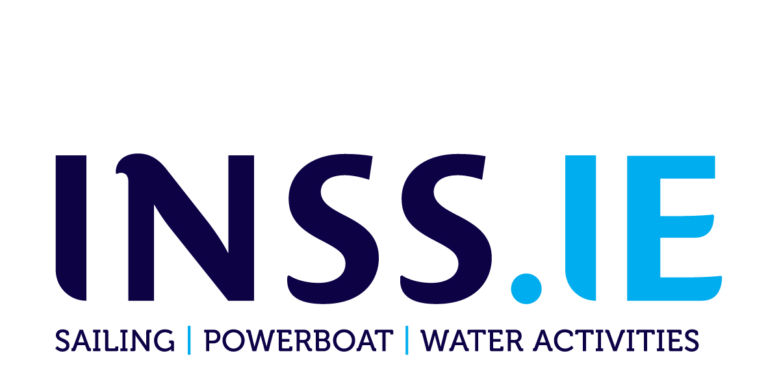
Man Overboard A person falling overboard can be a worrying experience, especially in troubling conditions. It’s important to remember that it is possible to safely recover them, but practise is crucial. Here we go through some of the manoeuvres in different types of craft where technique differences exist. Finally, we share the story of a MOB that occurred on one of the school’s yachts Jedi while competing privately in the 2018 Round Ireland Yacht Race. Video Walk-through…See it DemonstratedRS Sailing demonstrate the Man Overboard Recovery as taught by Paddy above. More Information…Introduction. Why can’t I just spin the boat around? Basically, you don’t want to miss the MOB and not get back to them, and equally you don’t want to get back to they and not be able to stop, therefore causing them injury. The manoeuvre outlined below will give you the best chance to get back to them, and means you’re more likely to only have to do the manoeuvre once! Manoeuvre Overview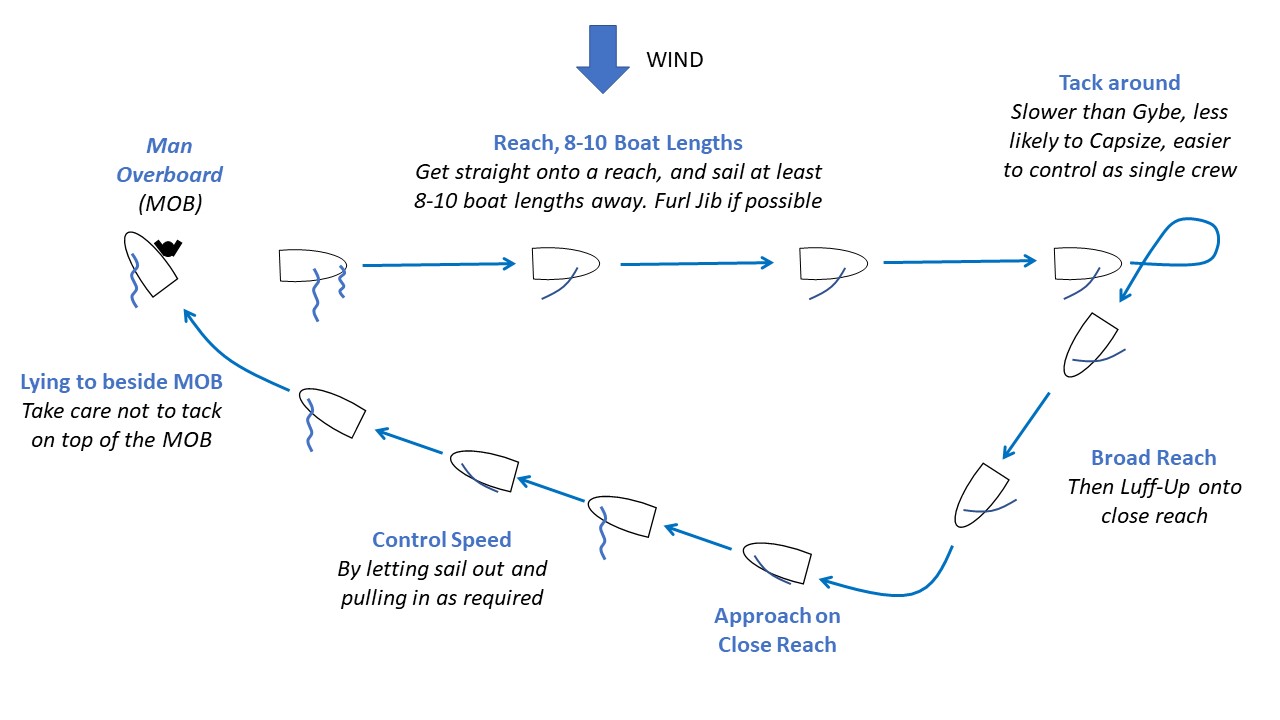 While you’re doing the MOB Recovery
Once you’ve got them back onboard…First thing to do is to check they’re ok? Did they hurt themselves when they fell in, maybe they got a hit on the head from the boom. They’re unlikely to be wearing a wetsuit, so now’s the time to head ashore. They will certainly start to get cold. Consider getting rescue services if required. They’ll likely be in a wetsuit. Falling in and capsizing is par from the course. That said, its still worth keeping an eye on them in case they start to get cold. Download this guide in printable format… Chief Instructor and Yachtmaster Instructor Kenneth Rumball talks though Man Overboard Recovery on yachts. Not only does he discuss getting back to the casualty, but how you might actually get them back in the boat. Video Briefing…It was about 1 am off the coast of Kerry when John White came off the helm of Jedi, a J109, competing in the 2018 Round Ireland Yacht Race. Facing 30 knots on the nose and 3-4 metre seas, as John moved forward, a large wave crashed over the boat, knocking John overboard. Jedi, one of the school’s yachts, was being skippered by chief instructor Kenneth Rumball. Hear from Kenneth and John about the experience from different perspectives Kenneth stresses the importance of preparing, both safety kit, procedures and practise and general boat handling ability. Key training courses that proved useful in this situation are listed here:
Our Website uses cookies to distinguish you from other users of our Website. This helps us to provide you with a better experience when you browse our Website and also allows us to improve our site. They also help us to improve our Service and to deliver many of the functions that make your browser experience more user-friendly. A cookie is a small text file that is placed on your device by a web server that we store on your browser or the hard drive of your computer if you agree. Cookies contain information that is transferred to your computer's hard drive. Strictly Necessary Cookie should be enabled at all times so that we can save your preferences for cookie settings. If you disable this cookie, we will not be able to save your preferences. This means that every time you visit this website you will need to enable or disable cookies again.
This website uses 3rd party cookies to collect anonymous information such as the number of visitors to the site, and the most popular pages. These named third parties may include, for example, advertising networks and providers of external services like web traffic analysis services. These third party cookies help us to improve our Service and to deliver many of the functions that make your browser experience more user-friendly. You may see ‘social buttons’ during your use of the Website, including but not limited to Twitter, Facebook, LinkedIn and Instagram which enable you to share or bookmark certain web pages. These websites and social platforms have their own cookies and privacy practices, which are controlled by them. Keeping this cookie enabled helps us to improve our website. A full list of Cookies used can be seen in our Privacy & Cookie Policy Please enable Strictly Necessary Cookies first so that we can save your preferences!
More information about our Cookie Policy  RYA Powerboat Level 2
Powerboat Level 2 course is aimed at students without any previous knowledge and experience on powerboats. Course ContentThe course provides two days of practical training in boat handling and safety in powerboats. The course covers everyday boat handling and the use of safety equipment, securing to a buoy, anchoring, planing speed manoeuvres, collision regulations, leaving and coming alongside, and man overboard recovery drills. The 2 days will be predominantly practical and on the water with only minimal sessions ashore . During the shore sessions we will cover some essential navigation points and the basic portions of the International Regulations for Preventing Collisions at Sea. There is no exam during the course, rather it is a continuous learning and evaluative experience during these days with your instructor. Students who successfully complete the RYA Powerboat Level 1 or RYA Powerboat Level 2 course are awarded the appropriate RYA course completion certificate. This course will also enable you to apply for the ICC (International Certificate of Competence). Please note that it is mandatory by law to have a license to drive a pleasure craft in Antigua and Barbuda.
Privacy / Cookies Copyright © Second Star Sailing School Powered by Dotflorence® Srl
Ideal for short passages and exploring your local waters, make the most of your time afloat with our powerboat courses Powerboating offers the best of both worlds, the leisurely pace of a gentle cruise and the thrill of zipping across the open water. RYA training will give you the confidence and skills to handle the boat safely and make the most of your time on the water, whatever your pace. As well as courses for recreational boaters, RYA powerboat certificates are also used by professional open boat skippers who need to prove their competence or require professional qualifications for work. So whether you use powerboats for leisure, work, or in connection with another activity such as sailing or rescue, we have a course for you. Find out more about our powerboat courses below. The National Powerboat scheme is comprised of a series of one and two-day practical courses that can be taken either onboard a centre’s boat, or your own. There’s something for all ages and levels of experience. A one-day introduction to simple boat handling and the use of safety equipment. A two-day course to get to grips with powerboat handling. Two days of practical pilotage, passage planning and navigating by day. Two days of planning and navigating more challenging passages by day and night. Two days of hands-on recovery and fleet management techniques for dinghies and windsurfers for those operating in a training or racing environment. This two-day course builds upon Level 2 Powerboat Handling skills, focussing on short-handed operations, passenger safety and comfort. Designed in consultation with the Professional Yachting Association (PYA). Increase your confidence and get qualified with our navigation and specialist short courses. A basic introduction to navigation for new skippers, crew or anyone interested in getting out on the water. Get qualified to use a handheld or fixed marine VHF radio with our course and exam. From first aid to diesel engine, there are a number of related classroom and online courses you may find useful as you develop your knowledge. Test your skill, knowledge and experience as a powerboat skipper by taking the RYA/MCA Advanced Powerboat exam. 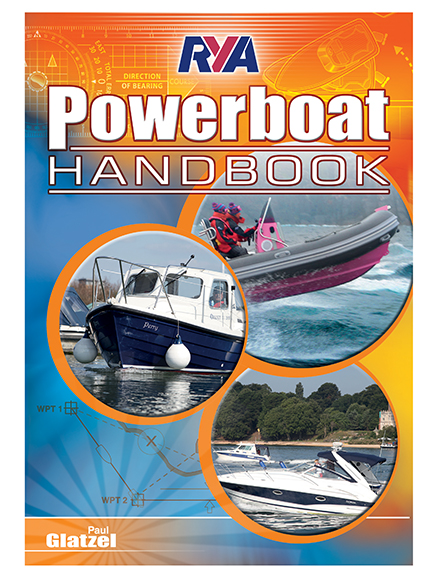 With more than 100 different titles to choose from, there’s an RYA book, eBook or audiobook for every age, interest and ability. Visit our webshop for course books and a range of supporting titles. 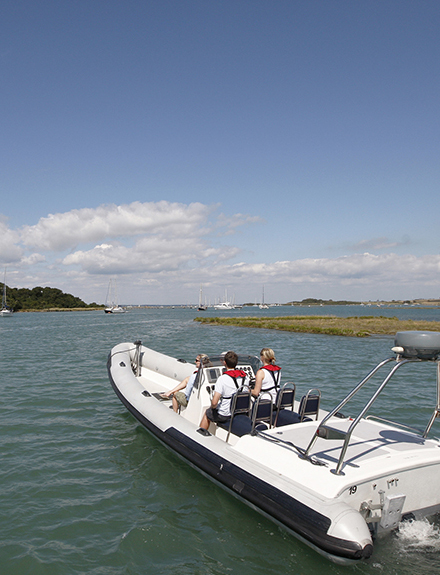 If you want to go powerboating overseas, you’re likely to need an ICC. The Level 2 Powerboat Handling certificate can be used as evidence of your competence. 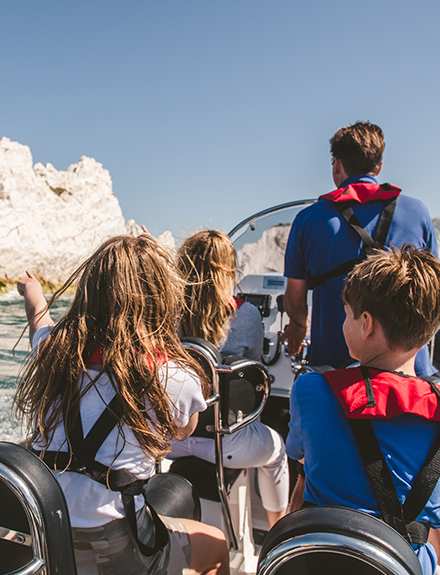 Powerboating can be great fun for the whole family and there are plenty of opportunities for young people to get involved. Check our course descriptions for minimum age recommendations. 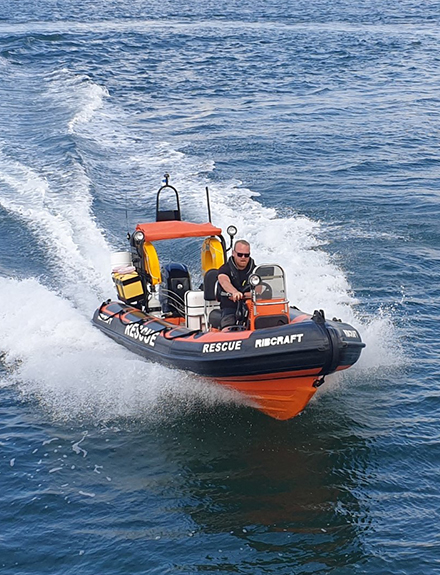 If you need a powerboat qualification for work, you might need a commercial endorsement. Find out more about professional qualifications and what it takes to work on the water. Your Gateway to Obtain Powerboat Handling (ICC) LicenceYou are allowed to sit in the transport malta nautical licence exam after successfully completing this course.. 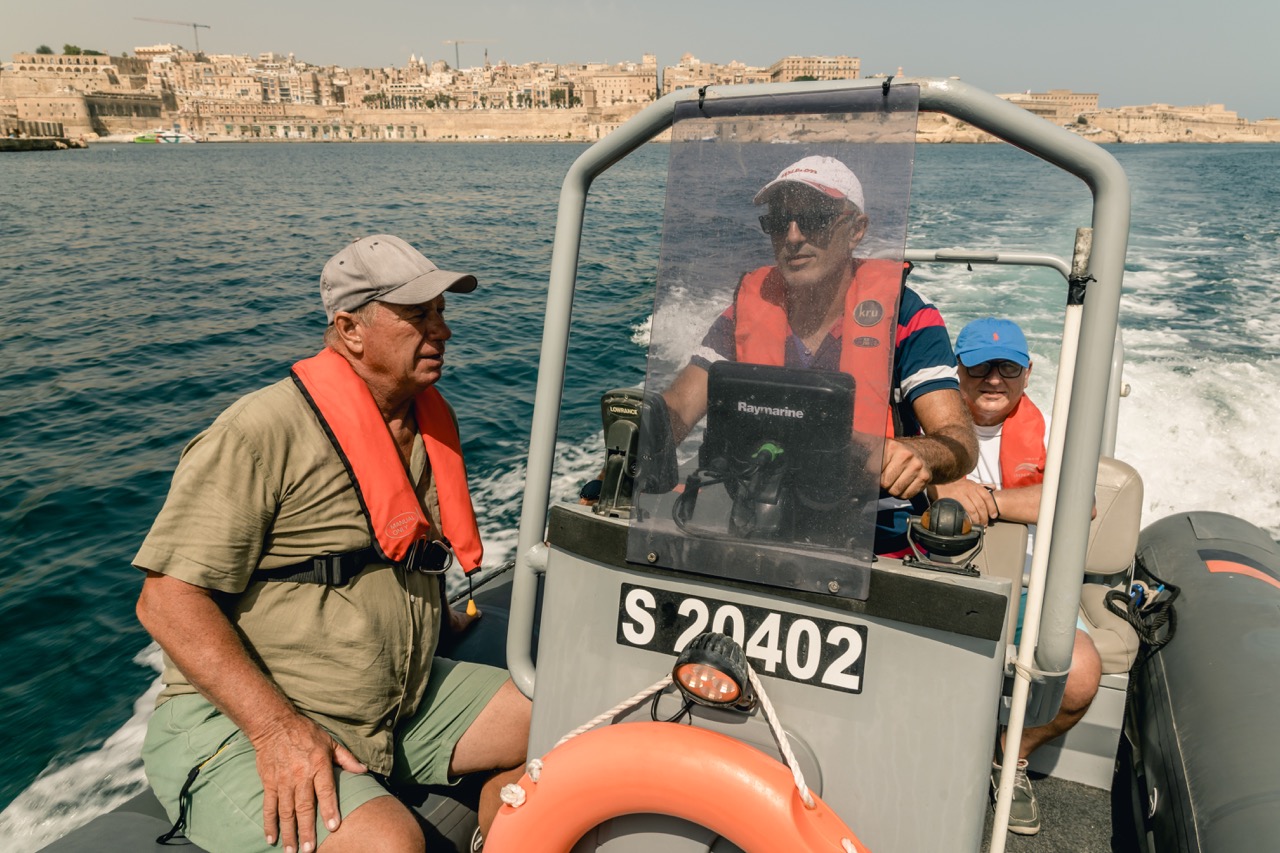 RYA Level 2 Powerboat HandlingFun | safe | confidence | beginner. This entry level course provides the skills and background knowledge needed to drive a powerboat and is the basis of the International Certificate of Competence (ICC). Upcoming Course DatesCourse date 1 : Sat 17 Aug - Sun 18 Aug | 1 places left | €350 per person | €1500 private group Note: This course is for beginners. Theory session on Saturday 10:00-16:00; Practical session time on Sunday will be notified. You are eligible to apply for Malta Nautical Licence exam after completing the course with extra cost. Course date 1 : Sat 07 Sep - Sun 08 Sep | 4 places left | €350 per person | €1500 private group Course date 2 : Sat 21 Sep - Sun 22 Sep | 4 places left | €350 per person | €1500 private group Course date 1 : Sat 05 Oct - Sun 06 Oct | 4 places left | €350 per person | €1500 private group Course date 2 : Sat 19 Oct - Sun 20 Oct | 4 places left | €350 per person | €1500 private group Course date 1 : Sat 02 Nov - Sun 03 Nov | 4 places left | €350 per person | €1500 private group Course date 2 : Sat 16 Nov - Sun 17 Nov | 4 places left | €350 per person | €1500 private group Course date 1 : Sat 07 Dec - Sun 08 Dec | 4 places left | €350 per person | €1500 private group Please contact us if you're interested in private class or on a different date 😉 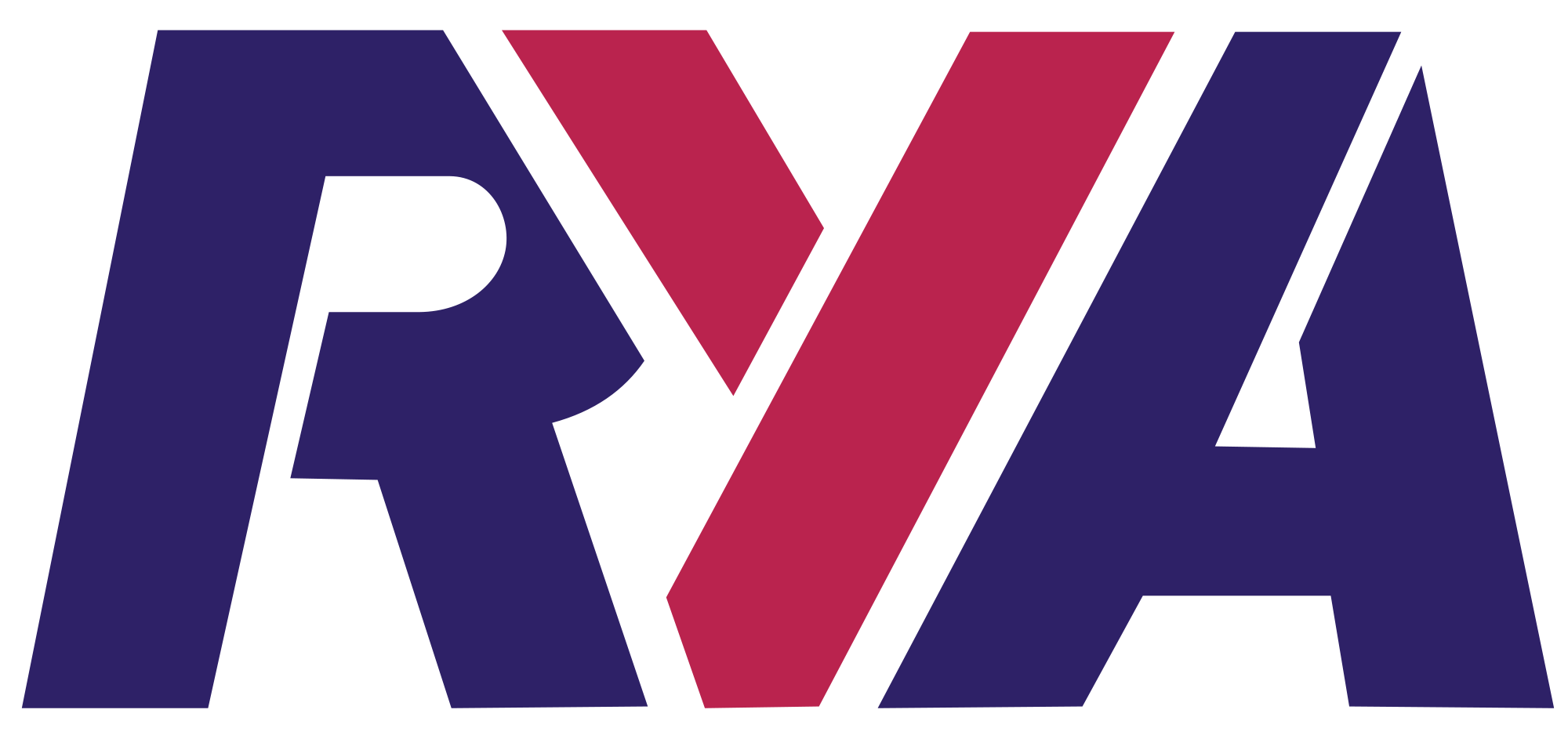 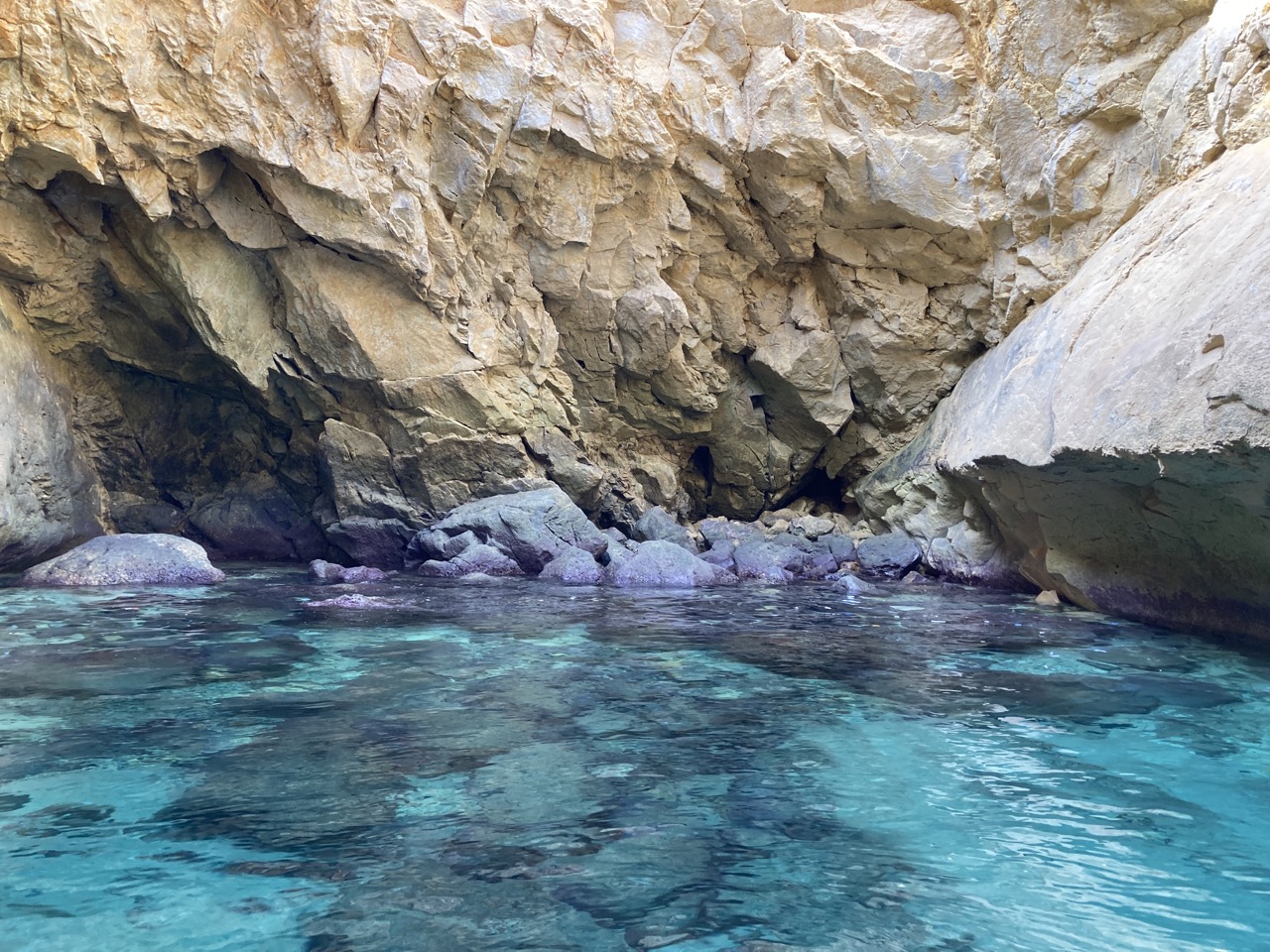 Course OverviewThe two day RYA Powerboat Level 2 course is the perfect boat training course for a beginner or for sharpening existing boat handling skills. It aims to teach boat handling and seamanship in powerboats. It focuses on low speed close quarters handling, man overboard recovery, an introduction to driving at planing speed, and collision regulations. The student will also learn marina skills, as well as going onto the open sea, safety equipment, anchoring, securing to a buoy, high speed manoeuveres, and much more. The course provides a level of training that is ideal for anyone from the casual weekend user through to some commercial users. It is also advantageous to tender drivers on superyachts, to dive boat drivers, and to rib drivers. For Maltese residents, you may be eligible to sit the Transport Malta Nautical License exam after successfully completing this Powerboat Level 2 Handling course. You will need to pay an extra 140 euro Nautcial Licence exam fee for that purpose. This course will also enable you to apply for the ICC (International Certificate of Competence). This qualification is required by most European countries to validate your competence to own or charter a boat. The ICC obtained by presenting your Powerboat Level 2 certificate will cover powerboats up to 10 metres in length. You can book the course directly on our website and make the course fee payment by credit card. Just click Book Now button and you will be lead to a page where you can choose dates, number of participants, extra items to add, and fill other necessary information. This course is ideal as a gift experience and like all our courses we can provide a gift voucher. Course Requirements
Course ContentLaunching and recovery, boat handling, securing to a buoy, anchoring, leaving and coming alongside, man overboard, use of the kill cord, high and low speed manoeuvering. Course supporting book: RYA Start Powerboating Course Notes 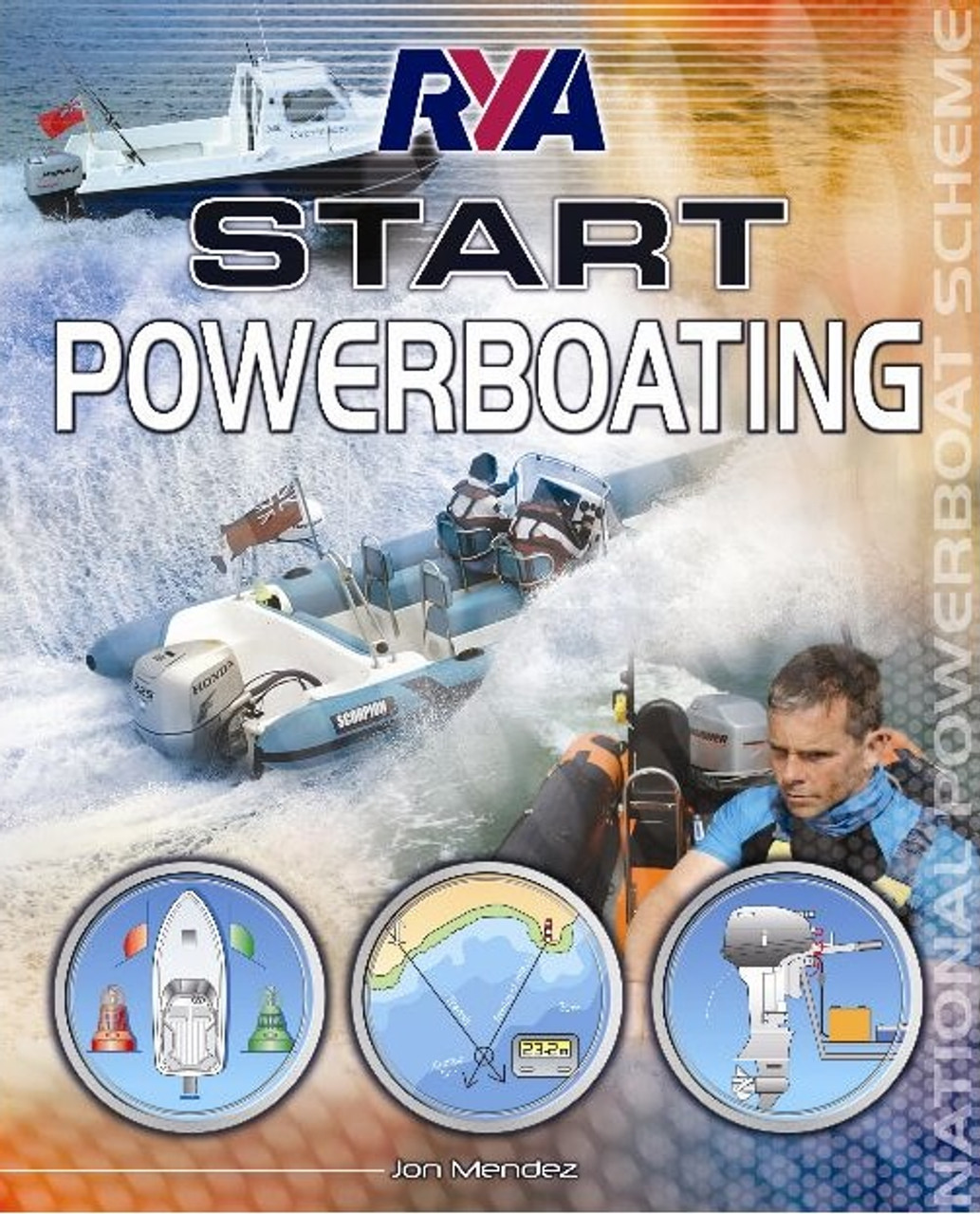 Course SyllabusAn introductory RYA Power boating which covers the following :
Following our introduction you will cover:
Out on the water our Instructors will introduce you to:
After successfully completing this course it is advisable to take the VHF/ SRC radio license. Supporting CourseTo book VHF course, simply add it in the Course Booking Page , and we will send you a log-in and instructions after receiving your booking. Recommended to bring
Please note that the temperatures in Malta are normally very warm during the day but it can be cold in the evenings and windy days at sea. It is a good idea to bring a small light rain mac if you have one and also a pair of long trousers and a warm fleece, just in case. Flight and On-arrivalIf you need a flight to Malta International, the airport code is MLA. There is only one airport in Malta. On arrival at Malta airport, there is a kiosk at the exit from the airport where you can pre pay the taxi to the boat. The cost of this is usually 25 Euro.The taxi drivers speak good English. Cheaper transport option would be use taxi app such as: Bolt, Ecab, Cool. There are plenty of taxi connected to these apps. You will have a short safety brief on arrival to familiarise yourself with the boat and meet your crew mates! Frequently Asked QuestionFor more details about course, booking, and certificate, please refer to the FAQ's section. RYA Powerboat Course System and Next StepHaving completed this course you should aim to spend a season putting the skills learnt into practice and then return to attend the RYA Day Skipper Shorebased course. 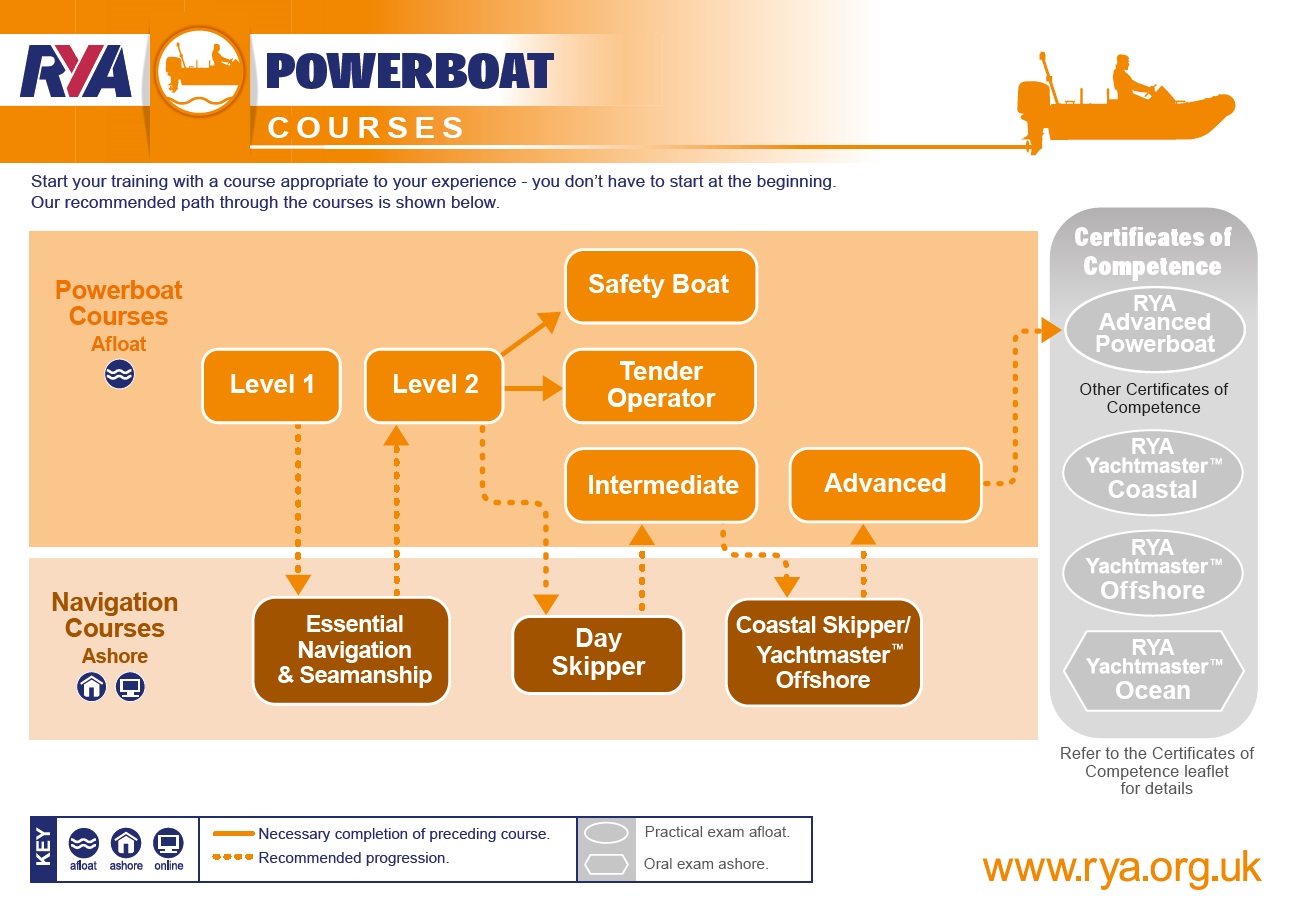 Recommended videos: |
IMAGES
VIDEO
COMMENTS
The exclamation 'man overboard' refers to a crew member or a passenger falling into the water and needing immediate rescue. Research by the Maritime Accident Investigation Branch (MAIB) has shown that crews have, on average, less than 11 minutes to recover a crewmate who has fallen overboard into cold water before the victim becomes ...
It focuses on low speed close quarters handling, man overboard recovery, an introduction to driving at planing speed, and collision regulations. The course can be taken at an inland or coastal location. It may be conducted in a variety of boat types, both planing and displacement. ... RYA Powerboat Scheme Syllabus and Logbook (Book) (G20) £7. ...
But not all man overboard incidents end well - the weather conditions may make returning to the casualty tricky or recovery from the water a challenge. This is why responding and dealing with a man overboard forms such a key part of all RYA powerboat courses at all levels , and why the RYA has developed recommended actions when responding to ...
Planning a day cruise, boat preparation, boat handling, pilotage, passage making, man overboard. Certificate issuing criteria Able to plan and execute short coastal passages by day . Format ... RYA Powerboat Scheme Syllabus and Logbook (Book) (G20) £7.99. Add to Basket . RYA Powerboat Handbook (Book) (G13) £18.49.
This is the accepted RYA Yachtmaster™ crew drill in the event of a Man Overboard: - Shout 'man overboard' to alert the crew. - Press the MOB button on the GPS. - Throw a life buoy and dan buoy to the MOB. Mark the MOB with a smoke-flare. - Allocate a crewmember to point at the MOB in the water. - Send a DSC distress alert and a Mayday.
RYA Powerboat Level 2. ... Man overboard; The RYA theory element of the PB Level 2 course will cover the types of craft and their respective advantages and disadvantages, engines and drives, use of power tilt and trim tabs, safety checks, personal buoyancy, awareness of other water users, application of the collision regulations (IRPCS), local ...
Mendez Marine offers boat training ranging from VHF courses through to Yachtmaster exams. For more information, visit mendezmarine.co.uk or call 01489 588977. Our News Editor recalls what he learnt on his first weekend of formal training at Mendez Marine on the River Hamble.
This entry level award provides the skills and background knowledge needed to drive a powerboat. The course focusses on low speed close quarters handling, man overboard recovery, an introduction to driving at planing speed and collision regulation. This course is suitable for participants 16+. All courses run for 2 days from 9am to 5pm. Please note we do not provide wetsuits. This course is ...
RYA Powerboat Level 2) training takes place at our private country house estate venue in Staffordshire; a two-day course aimed at the commercial / industrial / lowland rescue and fire & rescue sectors; operating in land-locked counties without tidal or coastal considerations. Our instructional team are either currently serving or recently ...
The RYA Powerboat level 2 course provides the skills and background knowledge needed to drive a powerboat. It focuses on low-speed close-quarters handling, man overboard recovery, an introduction to driving at planing speed and collision regulations. This RYA Powerboat Level 2 Course can also be converted to an International Certificate of ...
Advanced Powerboat Syllabus. Aim: To teach boat handling, seamanship, pilotage and navigation up to the standards required to drive a planing powerboat safely by day and night in tidal coastal waters with which the candidate may be familiar. Practical. Prepare the powerboat. Carry our fuel and engine checks.
The RYA Level 2 Powerboat Handling course is a two day course that provides the skills and background knowledge need to drive a powerboat and is the basis of the International Certificate of Competence (ICC). The course includes close quarters handling, high speed manoeuvres, man overboard recovery and collision regulations and can be taken on ...
Course Description. This two-day entry level course provides the skills and background knowledge needed to drive a powerboat and is the basis of the International Certificate of Competence. It focuses on low speed close quarters handling, man overboard recovery, an introduction to driving at planing speed, and collision regulations.
RYA Level 2 - Powerboat Handling. Learn how to drive a powerboat safely. This two-day entry-level course provides the skills and background knowledge needed to drive a powerboat. The course covers launching and recovery, boat handling, securing to a buoy, anchoring, leaving and coming alongside, man overboard recovery, slow speed close ...
RYA Powerboat Level 2 Course provides the skills and background knowledge needed by the competent powerboat driver and is the basis of the International Certificate of Competence. It aims to teach boat handling and seamanship in powerboats. It focuses on low-speed close quarters handling, man overboard recovery, an introduction to driving at ...
The RYA Powerboat training Scheme is for those wanting to drive small open powerboats such as RIBs (rigid inflatable boats), sports boats and small launches. ... (ICC). It focuses on low-speed close-quarters handling, man overboard recovery, an introduction to driving at planing speed and collision regulations.
TCP1 L Man Overboard Equipment 1 Lifebelt with vessels Name Drogue on belt Light on belt Buoyant line(s) 18m min Means of re-boarding vessel I TCP4 M Bower + kedge anchor (visual check) Weight Chain size Warp size At least 10 meters of chain N Towing warp. Kedge warp can be used as towing line Ref Item Check
Launch and recovery (8-11 year olds to observe), preparation of boat and crew, boat handling, picking up and securing to a mooring buoy, leaving and coming alongside, man overboard (theory)
It aims to teach boat handling and seamanship in powerboats. It focuses on low speed close quarters handling, man overboard recovery, an introduction to driving at planing speed, and collision regulations. Please click here to see the progression of RYA Powerboat Courses and the recommended path for both theory and practical courses.
Man Overboard In Reality. It was about 1 am off the coast of Kerry when John White came off the helm of Jedi, a J109, competing in the 2018 Round Ireland Yacht Race. Facing 30 knots on the nose and 3-4 metre seas, as John moved forward, a large wave crashed over the boat, knocking John overboard. Jedi, one of the school's yachts, was being ...
The course covers everyday boat handling and the use of safety equipment, securing to a buoy, anchoring, planing speed manoeuvres, collision regulations, leaving and coming alongside, and man overboard recovery drills. The 2 days will be predominantly practical and on the water with only minimal sessions ashore.
As well as courses for recreational boaters, RYA powerboat certificates are also used by professional open boat skippers who need to prove their competence or require professional qualifications for work. So whether you use powerboats for leisure, work, or in connection with another activity such as sailing or rescue, we have a course for you.
The two day RYA Powerboat Level 2 course is the perfect boat training course for a beginner or for sharpening existing boat handling skills. It aims to teach boat handling and seamanship in powerboats. It focuses on low speed close quarters handling, man overboard recovery, an introduction to driving at planing speed, and collision regulations.